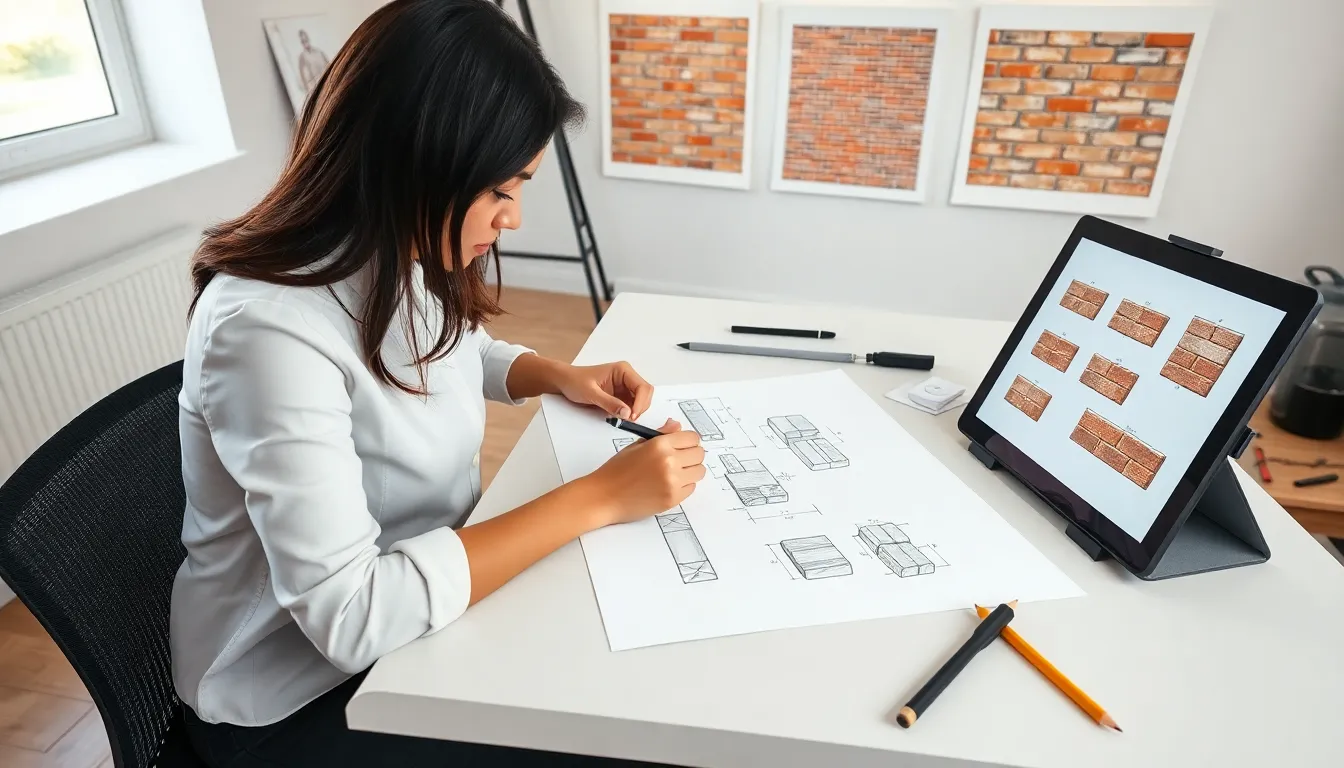Are you ready to transform your sketches into brick masterpieces? Drawing bricks might seem as easy as stacking them up, but there’s a finesse to it that can elevate your artwork from ordinary to extraordinary. Whether you’re a budding artist or just looking to fill your sketchbook with some brick-tastic designs, this guide will walk you through the ins and outs of brick drawing. Get comfy, grab your sketchpad, and let’s immerse.
Table of Contents
ToggleUnderstanding Brick Structure

To draw bricks well, one must first understand the structure of these iconic building blocks. Bricks aren’t just rectangular lumps: they come in various shapes and sizes, which add character to any structure they comprise.
Types of Bricks
There are several types of bricks, each serving a unique purpose. Common bricks are probably what first comes to mind – they’re simple, sturdy, and are used widely in construction. But, there are also decorative bricks, fire bricks, and even engineering bricks, each having their unique textures and finishes. Familiarizing oneself with these types will enhance the authenticity of your drawing.
Standard Brick Dimensions
In most cases, the standard-size brick measures approximately 7.5 inches long, 3.5 inches wide, and 2.25 inches high. But, scaling this down to a manageable size for drawing is critical. Everyone has their preferred measurement: using a size like 1.5 inches by 0.75 inches works just fine for sketching. Always remember to keep proportions consistent: this will make your drawings more believable.
Basic Drawing Tools You’ll Need
Before picking up your pencil, it’s vital to gather the right tools. Depending on the style and details you aim to achieve, your tools can make a world of difference. Here’s a quick overview:
- Pencils: A range of pencils from hard (H) for fine lines to soft (B) for shading and depth.
- Erasers: Both regular and kneaded erasers can help refine details and correct mistakes.
- Ruler: Achieving that perfect edge isn’t just luck: a ruler ensures your lines are precise.
- Sketching Paper: Smooth paper is ideal for pencil drawings, while textured paper could add an engaging feel to your bricks.
Having these tools at the ready can help kickstart your drawing process.
Step-by-Step Guide to Drawing Bricks
Now that you’ve got the basics down, let’s jump into a step-by-step guide on how to draw bricks.
Creating Realistic Texture Effects
Start with the basic rectangle, but don’t stop there. To achieve that realistic effect, add texture. Use light, short lines across the surface of your bricks to simulate bumps, cracks, and the unevenness typical of real bricks. Think of it like giving your bricks some personality.
Shading Techniques for Depth
Effective shading can propel your bricks from flat illustrations to three-dimensional forms. One of the simplest techniques involves determining the light source in your sketch. Shade the side opposite to the light, and remember to use circular motions with your pencil to create smooth gradients. Gradual transitions of dark to light will enhance the realism of your bricks.
Using Color to Enhance Your Bricks
Adding color can lift your brick drawings to another dimension. Start with a base color, like a reddish-brown, but don’t be afraid to experiment. Use various shades to highlight the unique textures you’ve created. For instance, a light beige can be applied to areas where light hits the bricks, while a deeper crimson can make recessed areas pop. You’d be surprised at how layers of color can bring depth and vibrancy to your work.
Common Mistakes to Avoid When Drawing Bricks
Even seasoned artists stumble. Here’s a heads-up on common pitfalls to sidestep:
- Ignoring Perspective: Bricks should relate to one another according to the viewer’s angle. Pay attention to where your light source originates and ensure that your vanishing points are consistent.
- Overly Perfect Lines: Real bricks aren’t immaculate. Embrace the imperfections: they add authenticity.
- Neglecting Shading and Depth: Shadows are your friends: incorporate them liberally to give your bricks that sought-after three-dimensional feel.








